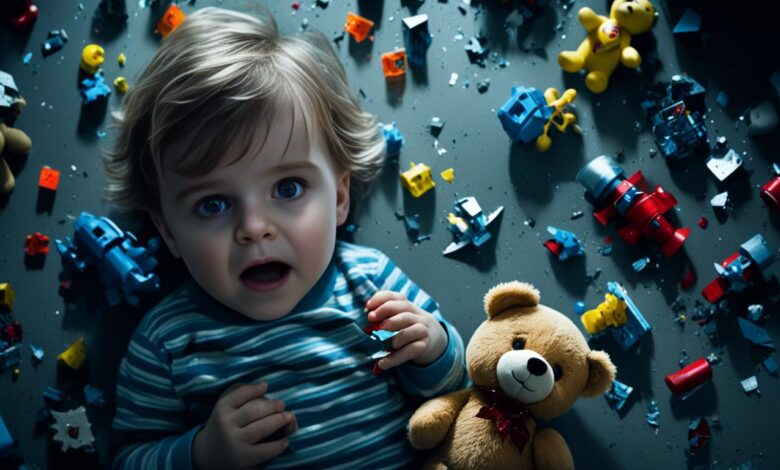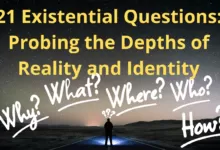Healing Journeys: Understanding Childhood Trauma

Have you ever thought about the lasting effects of childhood trauma? It greatly impacts our mental health and emotions. This article looks at how early experiences affect our growth and views of the world. We explore how trauma shapes us and the importance of getting help. Let’s journey through healing, understanding childhood trauma’s deep influence.
Our childhood events deeply affect us, right into adulthood. From our first days to early youth, everything around us matters. These experiences can really change our paths. The impact of childhood trauma is significant, affecting our minds, how we relate to others, and our general life wellness.
What is Childhood Trauma?
Childhood trauma is when children go through very bad events, such as abuse or sudden loss when they are young. These things hurt them deeply inside, affecting how they feel.
Kids who face such pain often find it hard to deal with their feelings. This can stay with them for a long time, affecting how they grow and how they feel mentally.
It’s key to know that childhood trauma can happen in many ways. It’s not the same for every child. What hurts one might not hurt another the same way.
Such trauma deeply impacts how kids see the world and handle their emotions. It can affect their future, too, changing how they relate to others and feel.
Helping children heal from trauma is very important. To do this, understanding what they’ve been through is vital. It lets us give them the right help and care, building their strength against what they’ve faced.
Examples of Childhood Trauma
Childhood trauma comes in many forms, affecting kids deeply. Forms of trauma include:
- Physical abuse: Hurting a child on purpose, causing pain or injury.
- Sexual abuse: Forcing a child into sexual actions without agreement.
- Verbal abuse: Speaking harshly or negatively to a child, hurting their self-esteem.
- Emotional abuse: Damaging a child’s emotions, like through constant put-downs or threats.
- Emotional neglect: Not fulfilling a child’s emotional needs, like showing love, help, and advice.
- Sudden loss or separation: Losing a loved one unexpectedly or being taken away from a main caregiver.
- Foster care: Entering the foster care system due to problems at home or neglect.
- Bullying: Facing ongoing aggression, whether physical, verbal, or social, from peers.
- Poverty: Growing in poor conditions, without basic necessities or support.
- Violence: Living with repeated acts of physical violence or domestic abuse around you.
It’s also key to remember that childhood trauma can come from systemic discrimination. Racism, for example, can deeply affect a kid’s life.
Now, let’s look at an image that shows the many shapes of childhood trauma:
What Are the Costs/Effects of Childhood Trauma?
Childhood trauma has deep effects on a child’s brain and emotions. These effects can last a long time into adulthood. This can forever change how a person lives their life.
Childhood trauma affects brain development. Bad experiences early in life can harm how the brain grows and works. This might cause problems in thinking and dealing with feelings and actions.
Emotional well-being is also hit hard by childhood trauma. It can be tough to control emotions. Many may feel very anxious, sad, or have other mental health problems.
The effects of trauma can last for years in various ways. People might face more mental health issues like anxiety, depression, or PTSD. They could turn to drugs or alcohol. Their relationships might also suffer, making it hard to connect with others.
Understanding and dealing with childhood trauma is crucial. Professionals can step in and help with the right treatments. This can lead to a stronger, healthier life in the long run.
Recognizing the Signs
The signs of childhood trauma can look different in each person. Some might show clear signs, like nightmares. Others might keep their pain inside and not talk about it.
Professionals who know about trauma can help. They can spot the signs and offer the right help and care.
“The impact of childhood trauma can change how the brain and emotions work. It’s key to help people heal and recover.” – Dr. Emily Johnson, Child Psychologist
What Are Adverse Childhood Experiences (ACEs)?
Adverse Childhood Experiences (ACEs) are tough events young people face. These issues can affect both the body and mind for a long time.
This includes abuse, neglect, and tough family situations. Such events can make a kid feel unsafe and unstable.
Studies show these experiences can lead to health issues later on. They might increase the risk of getting heart disease, cancer, or battling with addiction.
Mentally, ACEs can lead to problems like depression and anxiety. They affect how a person sees the world and themselves. They also make forming strong relationships harder.
Recognizing and dealing with ACEs is vital for helping affected individuals. By understanding how these events affect lives, we can take steps to heal. This means creating safe spaces, stopping such things from happening, and offering help when needed.
Examples of Healing From Childhood Trauma
Healing from childhood trauma involves many steps. It is about becoming whole and feeling powerful again. This journey is unique to each person.
Defining Healing for Oneself
Finding what healing means for you is vital. Recognize your challenges and find your recovery goals. This helps you take control of your story and healing path.
Hope for the Future
Hope is critical in healing. It’s about staying positive and seeing a better future. This hope fuels the strength and courage needed to move past trauma.
Processing Anger and Grief
Dealing with anger and grief is part of healing. It’s about facing and working through your pain. By doing this, you start to let go of past hurts.
Improving Self-Compassion and Self-Care
Caring for yourself is key in the healing journey. This means treating yourself with kindness and prioritizing your well-being. Doing this helps you rebuild your self-esteem and supports healing.
Managing Emotions
Learning to manage emotions is essential. It’s about finding healthy ways to cope and grow emotionally. Therapy and mindfulness help in regulating your feelings and handling triggers better.
Accessing Repressed Memories
Tackling repressed memories is a big step. Therapy can help you work through these moments. This understanding is crucial to your recovery.
Developing Resilience and Self-Acceptance
Building resilience and self-acceptance is important. It’s about getting stronger and accepting yourself. When you show self-compassion, you set the stage for real healing.
The Stages of Healing From Childhood Trauma
Healing from childhood trauma is not easy. It’s a journey with several stages. These stages help people grow and heal. Knowing these stages gives people clear steps to follow.
Awareness and Acknowledgment of the Trauma
The first step is becoming aware of the trauma. It means understanding and accepting the hurt it caused. This helps start the healing process.
Education About Childhood Trauma
Learning about trauma is key in healing. It helps people understand its effects better. Everyone must learn and talk about trauma to break the silence.
Consideration of Change and Ambivalence
Change can be hard but also rewarding. People may feel unsure about changing their ways. It’s okay to feel conflicted and take time to decide about change.
Preparation for Healing
Getting ready for healing means creating a safe space. This includes finding supportive people like therapists or support groups. They’re key in the healing journey.
Taking Action Through Therapy and Self-Exploration
Doing something about healing is vital. Therapy helps heal deep wounds. Other activities like journaling are also helpful. They let people work through their trauma.
Maintenance of Self-Care Practices
Self-care is necessary for ongoing healing. It’s about being kind to oneself. Taking care of the body, emotions, and mind supports long-term recovery.
Embracing Change and Recovery
Adapting to change signifies true recovery. It’s about seeing things in a new light. This phase is when hope and self-acceptance grow.
Recognizing that Relapse is Normal
Setbacks are part of the healing road. It’s okay to have hard times. Remember, progress can continue even after a setback. Respond with understanding and strength.
Every stage of healing is a chance to change and grow. And remember, healing looks different for everyone. With knowledge, care, and help, it’s possible to overcome trauma.
Healing Lessons: Insights From Personal Journeys
Personal journeys from childhood trauma offer insights that guide others on their healing paths. They show how complex healing can be, with different challenges and victories.
For many survivors, feelings of guilt and betrayal are a normal part of the healing journey. It is important to acknowledge and process these emotions in a compassionate and non-judgmental manner.
Every sibling’s experience can be different, even if they grew up together, due to the unique impact of trauma. Recognizing these differences can help everyone show more empathy and support.
Using what’s learned in therapy or through education is key. It helps people see their patterns, what sets them off, and how to cope. This aids in healing and moving forward.
Writing in a journal is a potent way to look at oneself and express feelings. It guides individuals to see how their moods change and lets them learn from their healing voyage.
Finding it in oneself to forgive is tough and varies for each person. It’s not always needed or possible. Each person’s path is one of a kind; moving towards forgiveness should be gentle and patient.
Realizing that not all family will support the recovery is important. Finding help beyond family is just as crucial, sometimes even more so.
Recognizing and celebrating any healing progress, no matter how tiny, is vital. It boosts self-esteem and a positive outlook, fueling the desire to keep going.
The Importance of Support and Resilience
Support and resilience are key in recovering from childhood trauma. A strong support system offers a safe space to start healing. This system could be friends, family, or support groups. They give empathy, validation, and unconditional support, making survivors feel understood and not alone.
Professionals, like therapists, play a crucial role too. They help navigate complex emotions, offering insights and coping strategies. Methods like CBT and EMDR prove effective in the healing process.
Resilience, the ability to recover from hardships, is vital. It helps develop coping skills and a sense of empowerment.
Self-compassion is crucial too. Being kind to oneself supports healing from past pains. It involves acknowledging your hurt, validating your feelings, and treating yourself kindly.
“Building a support system of understanding individuals, seeking professional help, practicing self-compassion, and utilizing therapeutic approaches are all integral aspects of the healing journey.”
In short, overcoming childhood trauma is challenging but achievable. With support, professional guidance, resilience, and self-compassion, survivors can move towards a brighter future. They have the inner strength to reclaim their lives.
Conclusion
Healing from childhood trauma is brave and life-changing. It means facing the trauma, getting help, and finding support. With self-love and therapy, people can overcome their past and be happy.
Finding peace might include therapies like CBT and EMDR. These methods are proven to help. They give you ways to deal with the pain and improve your mental health.
Healing doesn’t happen all at once. It needs time and care. It’s important to be kind to yourself. With the right help and support, you can leave the past behind and look forward to better days.








